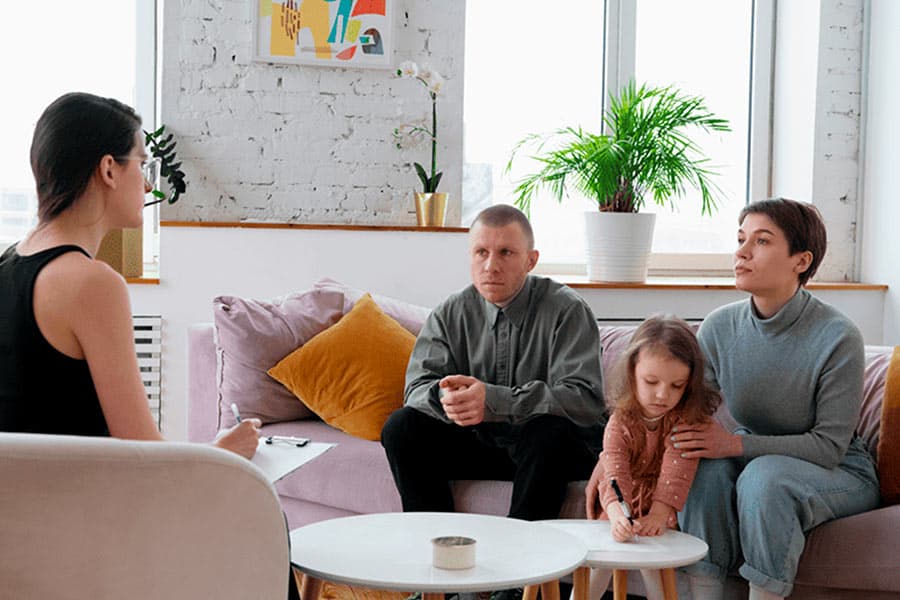Have you ever wondered how families overcome tough times? What if I told you there’s a way they heal together, stronger than before? This is the essence of family therapy, a treatment option that involves not just one but all members. It’s like fixing a bicycle chain—each link matters. Let’s dive into how this therapy works and why it might be the best choice for a family seeking harmony.
Join the CFTSS program for support—apply today!

What is Family Therapy?
Family therapy, also known as family counseling, is a type of psychological counseling that can help family members improve communication and resolve conflicts. It is usually provided by a psychologist, clinical social worker, or licensed therapist.
Imagine your family as a team. Just like a sports team, sometimes you might face challenges that you can’t handle alone. That’s where a family therapist comes in, like a coach, to guide you through the rough patches.
Benefits of Family Therapy
Building Stronger Bonds
One of the benefits of family therapy is that it strengthens the ties between family members. Just like building a fort together brings kids closer, family therapy fosters understanding and closeness.
Learning Healthy Communication
Another benefit is learning how to talk to each other. It’s like learning a new game—once everyone knows the rules, it becomes fun and easy to play.
Solving Family Problems
Family therapy can help solve big family problems, too. Think of it like a team working together to solve a puzzle. Everyone has a piece that fits somewhere.
Applications of Family Therapy
Navigating Life Transitions
Families go through many changes, like moving to a new place or welcoming a new family member. Family therapy helps everyone adjust, like a compass guiding you in a new direction.
Handling Behavioral Issues
Sometimes kids or teens might act out, and it can be tough to understand why. Family therapy looks at the whole picture to help everyone understand and support each other, much like how a whole village supports a child.
Dealing with Grief or Loss
Losing someone is like losing a part of a puzzle—it feels incomplete. Family therapy helps each member express their sadness and find a way to remember the missing piece with love.
How Does Family Therapy Work?
It’s Not Just Talking
Some people think therapy is just talking, but it’s more than that. It’s about doing activities that help families learn more about each other and how to work together.
Different Types of Family Therapy
Just like there are many kinds of families, there are many kinds of family therapy. Each type has its own way of helping, like different paths leading to the same playground.
It Involves Everyone
Family therapy involves everyone because everyone is important. It’s like a dance where each person has a part to play in the performance.
The Process of Family Therapy
Assessment
First, the therapist needs to understand your family, like a detective looking for clues to solve a mystery.
Setting Goals
Then, you’ll set goals together. It’s like deciding where to go on a family vacation—everyone’s opinion matters.
Working Through Issues
Next, you’ll work through your problems. It’s not always easy, like learning to ride a bike, but with practice, it gets better.
Ending Therapy
Eventually, when your family has reached its goals, therapy will end. It’s like graduation day, a time to celebrate your hard work!
Is Family Therapy Right for You?
Every Family is Different
Not every family needs therapy, but for some, it can be really helpful. It’s like when a plant needs extra water to grow—it’s not bad or weak; it just needs a little help.
Taking the First Step
If you think your family could benefit from therapy, the first step is talking about it. It’s like deciding on a family game night—everyone should agree to give it a try.
Finding the Right Therapist
Finding the right therapist is like finding the right teacher. You want someone who makes you feel comfortable and understands you.
Conclusion: A Path to Harmony
Family therapy can be a path to understanding and harmony for many families. It’s not a magic spell, but it can help families learn to communicate better, work together to solve problems, and support each other through tough times.
Now, what will your next step be? Will you consider this path for your family’s journey? The decision is a big one, but it’s also a brave step towards a happier and healthier family life.